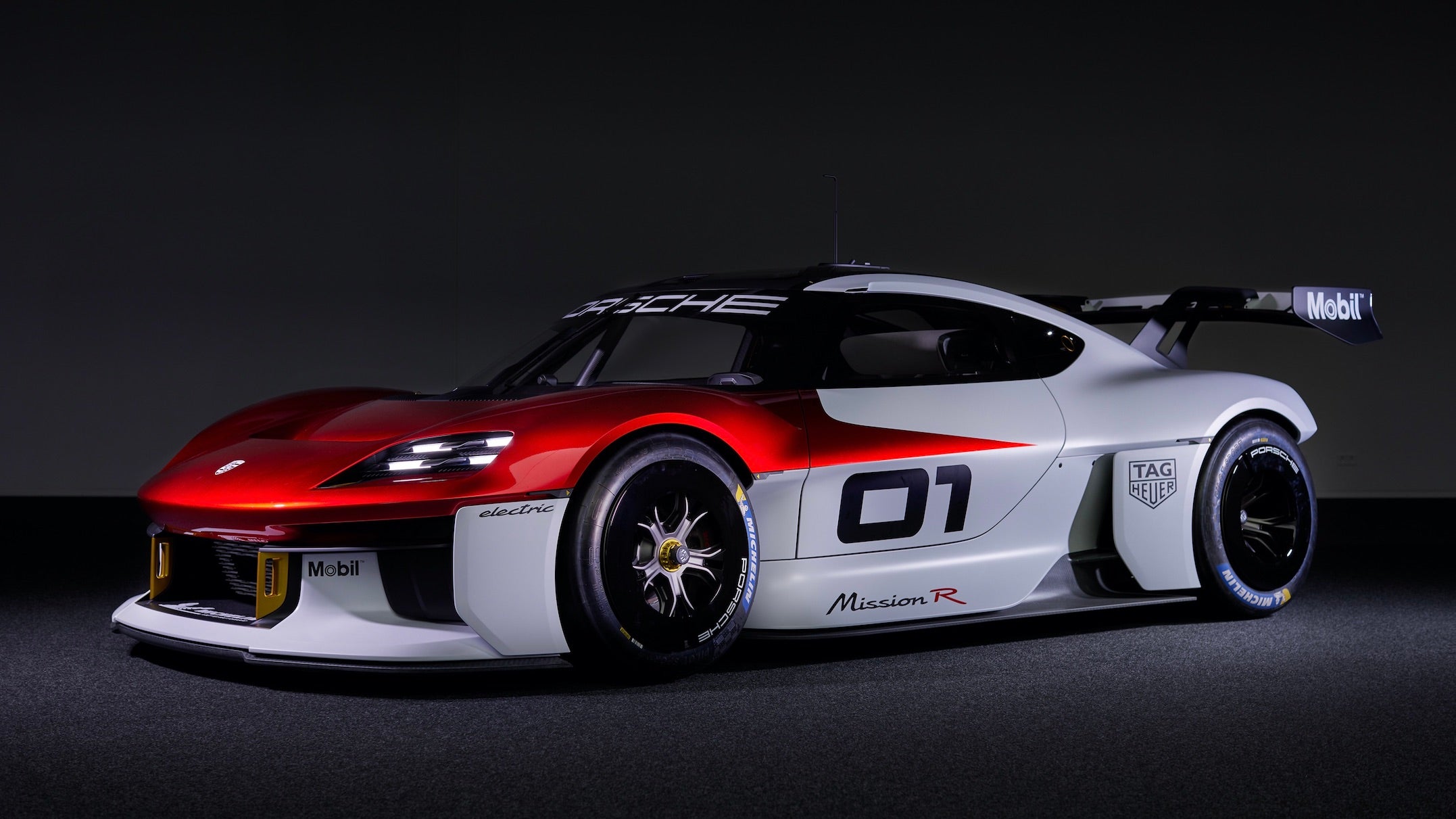
SUVs
Production of the second generation Macan won’t commence until 2023, Porsche confirmed in May. As is the case with the current model, all build will be at the Leipzig plant in eastern Germany. In a major change, the company will abandon petrol engines for this model. The architecture is to be the electric-only PPE, co-developed with Audi.

Discover B2B Marketing That Performs
Combine business intelligence and editorial excellence to reach engaged professionals across 36 leading media platforms.
The original Macan will however continue in production for some years: a second facelift was announced in July and that should keep the petrol variants looking contemporary until they are phased out.
There will likely be a facelift for the EV in 2027 with the third generation due in 2031.
While the existing Cayenne and Cayenne Coupé are still in the first phase of their life cycles and due for facelifts in 2022, they should evolve into EVs for the future generations. The PHEVs will likely disappear too.
The architecture should be an evolution of the Volkswagen Group’s MEB with the launch dates being respectively 2026 and 2027.
Cars
Why Porsche is taking so long to replace the 718 Boxster and 718 Cayman remains puzzling. Some now believe that the company will keep the current cars in production until 2024, which seems extraordinary, given how old they are. They could be replaced by electric-only models, each based on the Volkswagen Group’s PPE architecture.
In all likelihood, the Mission R concept revealed at the Munich IAA in September heralded some of the looks of a future electric Cayman.
The company has been building the 992 series 911 for three years now and as with every generation, there is a constant stream of new derivatives, quite a few of which have appeared this year.
The GT3 was announced in February. Four months later came the announcement of the less extreme looking GT3 Touring Package. Also in June, five GTS variants were added: Carrera GTS Coupé, Carrera GTS Cabriolet, Carrera 4 GTS Coupé, Carrera 4 GTS Cabriolet and Targa 4 GTS. There should be a facelift and some engine revisions, including a form of electrification, in 2022.
It is still too early to say how Porsche intends to replace the 992 – due in 2026 – but the company is said to be open to the idea of it being a fully electric car. However, flat six engines might also be available until the end of the decade.
The Taycan Cross Turismo is Porsche’s second fully electric model. Unlike the firm’s first EV, which uses the J1 architecture, the new shooting brake’s platform is PPE.
Production commenced in March, the company launching the car soon after in four versions. Each has the so-called Performance Battery Plus (total capacity of 93.4 kWh). These are as follows:
- Taycan 4 Cross Turismo – 280 kW (380 PS), overboost power for Launch Control 350 kW (476 PS), 0-100 km/h in 5.1 seconds, top speed 220 km/h, WLTP range 389-456 km
- Taycan 4S Cross Turismo – 360 kW (490 PS), overboost power with Launch Control 420 kW (571 PS), 0-100 km/h in 4.1 seconds, top speed 240 km/h, range 388-452 km
- Taycan Turbo Cross Turismo – 460 kW (625 PS), overboost power with Launch Control 500 kW (680 PS), 0-100 km/h in 3.3 seconds, top speed 250 km/h, range 395-452 km
- Taycan Turbo S Cross Turismo – 460 kW (625 PS), overboost power with Launch Control 560 kW (761 PS), 0-100 km/h in 2.9 seconds, top speed 250 km/h, range 388-419 km
All-wheel drive and adaptive air suspension are standard and there is an optional Off-Road package which increases ground clearance by up to 30 mm.
Other variants will be added during the next few years and a facelift should happen in the fourth quarter of 2024. The successor is pencilled in for Q4, 2028.
Porsche’s two biggest cars have been around since 2016 and 2017 respectively. The Panamera (hatchback) and Panamera Sport Turismo (shooting brake) have also each been facelifted, so they are now in the final phases of what should be eight year cycles.
The company will naturally continue to tweak the two Panameras, and indeed added additional variants just a few months after the August 2020 restyles. These are the 4 E-Hybrid, Turbo S E-Hybrid and 4S.
The additions to the line-up joined these variants:
- Panamera – 243 kW (330 PS) & 450 Nm 2.9-litre biturbo V6
- Panamera 4 – 243 kW (330 PS) & 450 Nm 2.9-litre biturbo V6
- Panamera GTS – 353 kW (480 PS) & 620 Nm 4.0-litre biturbo V8
- Panamera Turbo S – 463 kW (630 PS) & 820 Nm 4.0-litre biturbo V8
The next models will be available in fully electrified form. There is also a chance that the cars will be EV-only. They will likely become slightly larger so as to maintain their positioning above the Taycan and Taycan Cross Turismo.
Reports for many other manufacturers’ future models are grouped in the OEM product strategy summaries section of Just Auto.
Future platform intelligence
More detail on past, current and forthcoming models can be found in PLDB, the future vehicles database which is part of GlobalData’s Automotive Intelligence Center. That includes Porsches not covered in this report.
This is the fifth in a multi-report series looking at the brands of Volkswagen AG. It follows overviews of selected VW cars and MPVs, VW crossovers, SUVs and pick-ups, Audi cars and Audi SUVs. The next marque is Škoda, then SEAT and Cupra, Bentley and Lamborghini.






